- Home
- Barbara W. Tuchman
First Salute
First Salute Read online
Praise for Barbara Tuchman and The First Salute
“[A] tightly woven narrative, ingeniously structured.… She concludes with a salute for all that America has achieved, and a deep sadness for all that it hasn’t.”
—The Christian Science Monitor
“Nothing in a novel could be more thrilling than the moment in this glorious history when French soldiers arrive on a boat at Chester, Pa., in 1781, look on the dock and see a tall, familiar figure: George Washington.… It is only part of Tuchman’s genius that she can reconstitute such scenes with so much precision and passion.… [A]n exhilarating book about human greed, foolishness and courage.”
—People Magazine
“This is ‘drum-and-trumpet’ history at its best (in this case ‘jib-and-mainsail’ would be more apt).… [B]ecause she presents both telling detail and grand theory in unexpected ways and in splendid, sweeping prose, Barbara Tuchman’s works continue to dazzle.”
—Houston Post
“[F]resh, interesting.… The author’s keen sense of human nature and her considerable knowledge of 18th-century government and military tactics unlock the machinations and motivations behind the basic facts of the conflict.”
—The Pittsburgh Press
By Barbara W. Tuchman
BIBLE AND SWORD (1956)
THE ZIMMERMANN TELEGRAM (1958)
THE GUNS OF AUGUST (1962)
THE PROUD TOWER (1966)
STILWELL AND THE AMERICAN EXPERIENCE IN CHINA (1971)
NOTES FROM CHINA (1972)
A DISTANT MIRROR (1978)
PRACTICING HISTORY (1981)
THE MARCH OF FOLLY (1984)
THE FIRST SALUTE (1988)
A Ballantine Book
Published by The Random House Publishing Group
Copyright © 1988 by Barbara W. Tuchman
All rights reserved.
Published in the United States by Ballantine Books, an imprint of The Random House Publishing Group, a division of Random House, Inc., New York, and distributed in Canada by Random House of Canada Limited, Toronto.
Grateful acknowledgment is made to Little, Brown and Company and to Curtis Brown Ltd. for permission to reprint excerpts from John Paul Jones: A Sailor’s Biography by Samuel Eliot Morison. Copyright © 1959 by Samuel Eliot Morison. Copyright renewed by Emily Morison Beck. Reprinted by permission of Little, Brown and Company and Curtis Brown Ltd.
Ballantine and colophon are registered trademarks of Random House, Inc.
www.ballantinebooks.com
Library of Congress Catalog Card Number: 88–92862
eISBN: 978-0-307-79857-2
This edition published by arrangement with Alfred A. Knopf, Inc.
v3.1
To my grandchildren, Jennifer, Nell, Oliver and Jordan, lights of the new generation.
Contents
Cover
Other Books by This Author
Title Page
Copyright
Dedication
ILLUSTRATIONS
ACKNOWLEDGMENTS
Maps
Notice
I “Here the Sovereignty of the United States of America Was First Acknowledged”
II The Golden Rock
III Beggars of the Sea—The Dutch Ascendancy
IV “The Maddest Idea in the World”—An American Navy
V Buccaneer—The Baltimore Hero
VI The Dutch and the English: Another War
VII Enter Admiral Rodney
VIII The French Intervention
IX Low Point of the Revolution
X “A Successful Battle May Give Us America”
XI The Critical Moment
XII Last Chance—The Yorktown Campaign
Epilogue
Bibliography
Reference Notes
About the Author
Illustrations
(FOLLOWING this page)
1. Admiral Sir George Brydges Rodney at forty-two, by Joshua Reynolds, 1761 (Courtesy of The National Portrait Gallery, London)
2. St. Eustatius (Courtesy of Algemeen Rijks Archief)
3. Southeast view of New York Harbor (Courtesy of The New-York Historical Society, New York)
4. Sir Joseph Yorke, by Perroneau (Courtesy of The National Portrait Gallery, London)
5. Admiral François Joseph Paul de Grasse at Yorktown (Courtesy of the New York Public Library—Prints Division)
6. Action between the Serapis and Bonhomme Richard (Courtesy of the National Maritime Museum, London)
7. The Battle of Cowpens, by Frederick Kemmelmeyer (Courtesy of The Yale University Gallery, Mabel Garvan Collection)
8. Sir Henry Clinton, 1787 (Courtesy of the R. W. Norton Art Gallery, Shreveport, Louisiana)
9. General Count de Rochambeau, by Charles Willson Peale (Courtesy of Independence Hall)
10. “America Triumphant and Britannia in Distress” (Courtesy of Colonial Williamsburg, H. Dunscombe Colt Collection, photograph by Delmore Wenzel)
(FOLLOWING this page)
1. Johannes de Graaff, artist unknown (Courtesy of New Hampshire State House, photograph by Bill Finney)
2. First Marquess, Lord Cornwallis, by Thomas Gainsborough (Courtesy of The National Portrait Gallery, London)
3. General George Washington at Trenton, by John Trumbull (Courtesy of The Metropolitan Museum of Art)
4. Map of the Siege of Yorktown (Courtesy of The Library of Congress)
5. Surrender of the British at Yorktown, by John Trumbull (Courtesy of Yale University Art Gallery)
6. Admiral Sir George Brydges Rodney in his last years, by Joshua Reynolds (Reproduced by gracious permission of Her Majesty the Queen)
MAPS
The West Indies in Relation to Europe and America
The March from New York to Virginia
The American Colonies
Southern Theater of Operations
New York Harbor and Environs
The Siege of Yorktown
Acknowledgments
I WOULD like to acknowledge with thanks those persons and institutions who helped me to locate sources in an unfamiliar field and otherwise assisted in the production of this book.
First, to my husband, Lester Tuchman, whose dependable presence and aid in support of failing eyesight is the rock on which this house is built.
H. E. Richard H. Fein, Ambassador of the Netherlands to the United States, who gave the initial impetus by an invitation to address the Commemoration in 1985 of the fortieth anniversary of the liberation of the Netherlands.
Dr. Fred de Bruin of the Ministry for Foreign Affairs of the Netherlands.
Special thanks to my daughter Alma Tuchman for persistence in untangling confusions, detecting errors and setting things straight, and additional thanks to my granddaughter Jennifer Eisenberg for help in the preparation of the reference notes.
A. B. C. Whipple of Greenwich, Connecticut, author of Fighting Sail, for clarification in the language and understanding of naval matters.
Dawnita Bryson, my secretary and typist, for devoted work through a difficult maze.
Han Jordaan of The Hague for records of Johannes de Graaff in the Archive of the West India Company.
G. W. Van der Meiden, Keeper of the First Section, Netherlands Rijks Archive.
Colonel Trevor Dupuy for guidance in the military history of the American Revolution.
Professor Simon Schama of Harvard University on questions of Dutch history.
Professor Freeman Dyson of the Institute for Advanced Study, Princeton, New Jersey, for supplying the quotation from Hakluyt on naval education (this page).
Galen Wilson, Manuscript Curator of the William L. Clements Library, University of Michigan, for records of Sir Henry Clinton.
Dr.
Marie Devine, Joan Sussler, Catherine Justin and Anna Malicka, librarians of the Lewis Walpole Library, Yale University, whose acquaintance with and instant recall of the contents of their collection is stunning.
Mark Piel, Director of the New York Society Library, and his staff for their kind assistance in many ways.
Rodney Phillips, Elizabeth Diefendorf and Joyce Djurdjevich of the New York Public Library for bibliographical help and guidance in the reference division. Bridie Race, secretary to the corporation, who pulls all wires with charm and efficiency.
Todd Ellison of Greenbelt, Maryland, for finding the Van Bibber correspondence in the Maryland Archives, and for his careful analysis of Clark’s Naval Documents.
Dorothy Hughes, London, for research assistance at the Public Record Office.
Joan Kerr, Richard Snow and Arthur Nielsen of American Heritage for picture research.
Geraldine Ostrove and Charles Sens, Music Division of Library of Congress, for material on “The World Turned Upside Down.”
The staff of the Historical Museum of St. Eustatius.
The staff of the Greenwich Library, in Connecticut, for answering many queries with unfailing courtesy and for efficient service in inter-library loans.
The Historical Society of Pennsylvania for records of the flag of the Continental Congress made by Margaret Manny.
New London, Connecticut, Historical Society and The National Maritime Museum, London, for naval records.
The MacDowell Colony, which has understood and arranged the perfect conditions for a place for uninterrupted and consecutive work away from the distractions of home.
The Dana Palmer House, at Harvard University, for a working residence next door to a great library.
Mary Maguire and Nancy Clements of Alfred A. Knopf and Barbara DeWolfe for indispensable aid in the publishing process.
Notice
A NUMBER of difficulties and discrepancies exist in the narrative: the first is the peculiar peregrination of Windward and Leeward islands in the Caribbean whose location and designation find no agreement among various atlases and current sources on the West Indies. The cartographic division of the National Geographic Society explains one reason for the confusion, namely that there is a “slight overlap” of the islands at the mid-point of the West Indian chain. According to the National Geographic, Dominica and the chain extending north of Martinique belong to the Leeward group and those south of Dominica down to and including Barbados and Tobago belong to the Windward group. I leave this problem to the controversy that will inevitably ensue, knowing that the definitive is elusive.
A SECOND problem is the continual elasticity in the given number of ships in a squadron or fleet. As explained in the footnote on this page, the count suffers from uncertain visibility at sea and depends upon whether frigates and merchant ships are counted along with ships of the line and whether a certain number may have left the squadron or been added to it after the count was made.
MONEY, that is, the value of a foreign currency in the late 18th century, or its equivalent to a better-known currency or to our own in contemporary terms, is of course a perennial problem in all historical studies. I can do no better than quote what I wrote in the foreword to A Distant Mirror, a book on the 14th century, that because value and equivalency keep changing and are impossible to make definite at any one time, I advise the reader not to worry about the problem but simply to think of any given amount as so many pieces of money.
FINALLY, the problem of non-agreement among authorities: e.g., on the identity of the Dutch Admiral who, in a famous incident of the Anglo-Dutch wars of the 17th century, sailed up the Thames with a broom tied to his mast. The English historian Wingfield-Stratford says it was Tromp, while Professor Simon Schama, historian of the Netherlands, says the admiral was de Ruyter.
Or, the case of King George II as godfather to Admiral Rodney, so stated by Rodney’s biographer, David Hannay, while a second biographer, David Spinney, says that claim “is a myth.”
Or, the utter confusion surrounding the battle or battles of Finisterre in 1747. The naval historian Charles Lee Lewis deals bluntly with one aspect of the problem by saying other accounts “are all incorrect.” (That’s the spirit!) The confusion among historians arose in this case because there were several battles of Finisterre closely following each other, and there are two Finisterres, one in France and one, the true land’s end of Europe, in Spain.
I
“Here the Sovereignty of the United States of America Was First Acknowledged”
WHITE puffs of gun smoke over a turquoise sea followed by the boom of cannon rose from an unassuming fort on the diminutive Dutch island of St. Eustatius in the West Indies on November 16, 1776. The guns of Fort Orange on St. Eustatius were returning the ritual salute on entering a foreign port of an American vessel, the Andrew Doria, as she came up the roadstead, flying at her mast the red-and-white-striped flag of the Continental Congress. In its responding salute the small voice of St. Eustatius was the first officially to greet the largest event of the century—the entry into the society of nations of a new Atlantic state destined to change the direction of history.
The effect of the American Revolution on the nature of government in the society of Europe was felt and recognized from the moment it became a fact. After the American rebellion began, “an extraordinary alteration took place in the minds of a great part of the people of Holland,” homeland of St. Eustatius, recalled Sir James Harris, Earl of Malmesbury, who was British Ambassador at The Hague in the years immediately following the triumph of the American Revolution. “Doubts arose,” he wrote in his memoirs, “about the authority of the Stadtholder” (Sovereign of the Netherlands and Prince of Orange) … “indeed all authority came under attack when the English colonists in America succeeded in their rebellion.” What the Ambassador was witnessing—in idea, if not yet in fact—was the transfer of power from its arbitrary exercise by nobles and monarchs to power stationed in a constitution and in representation of the people. The period of the transfer, coinciding with his own career, from 1767 to 1797, was, he believed, “the most eventful epoch of European history.” The salute to the Andrew Doria, ordered on his own initiative by the Governor of St. Eustatius, Johannes de Graaff, was the first recognition following the rebel colonies’ Declaration of Independence, of the American flag and American nationhood by an official of a foreign state. Dutch priority was not the most important aspect of the event, but as other claimants have disputed the case, let it be said that the guns of Fort Orange were confirmed as first by the President of the United States, in a plaque presented to St. Eustatius in 1939 over the engraved signature of the incumbent Franklin D. Roosevelt. The plaque reads, “In Commemoration of the salute of the flag of the United States fired in this fort November 16, 1776, by order of Johannes de Graaff, Governor of St. Eustatius, in reply to a national gun salute fired by the U.S. Brig-of-War Andrew Doria.… Here the sovereignty of the United States of America was first formally acknowledged to a national vessel by a foreign official.” Thereby de Graaff found a place, though it may be the least known of any, in the permanent annals of the United States.
The Andrew Doria, vehicle and protagonist of this drama, was not just any ship but already the possessor of a historic distinction. She was one of the first four ships, all converted merchantmen, to be commissioned into the Continental Navy created by act of the Continental Congress on October 13, 1775, and she was shortly to take part in its first active combat. She was a brigantine, a small two-masted vessel, refitted for belligerent action in the newly created American Navy. She had sailed from the New Jersey coast town of Gloucester near Philadelphia on October 23, under orders of the Continental Congress to proceed to St. Eustatius to take on military supplies and deliver a copy of the Declaration of Independence to Governor de Graaff. With only her limited sail area to catch the westerlies, her crossing in a little over three weeks to arrive by November 16 was a notable feat. Sailing times from North America to Europe
and back varied widely depending on the type of ship, with the heavier warships taking longer than frigates and merchantmen, and depending on the wind, which might sometimes shift erratically from the prevailing westerlies blowing eastward to the reverse. At the time of the Revolution, the eastward passage to Europe, called “downhill,” ordinarily took about three weeks to a month as opposed to the westward “uphill” voyage to America against the wind and the Gulf Stream, which took about three months.
Eustatius’ salute was of no great importance except for what it led to. By intentionally encouraging, in defiance of his own government, the Dutch trade in military armament to the Colonies, the Governor assured the continuance of shipments from St. Eustatius, a critical factor in saving the American Revolution at its frail beginnings from starvation of firepower. In the first year, wrote George Washington, in the whole of the American camp there were not “more than nine cartridges to a man.” In October, six months after the Colonies had put their rebellion to the test of arms, Washington confessed to his brother, “We are obliged to submit to an almost daily cannonade without returning a shot from our scarcity of powder which we are necessitated to keep for closer work than cannon distance whenever the redcoat gentry pleases to step out of their Intrenchments.” In the tight fight for Bunker Hill in June, 1775, when American powder was nearly exhausted, the soldiers had to combat the British with the butt ends of their muskets. Long kept dependent on the mother country for military supplies because of a persistent suspicion in Britain of a rebellious American potential, the Colonies had developed no native production of weapons or gunpowder and lacked the raw material in saltpeter and the skills and facilities for its manufacture. Ammunition from Europe shipped via the West Indies was the only source of supply. As neutrals, the Dutch, for whom commerce was the blood in their veins and seafaring as ocean navigators their primary practice, became the essential providers, and St. Eustatius, the hinge of the clandestine traffic to the Colonies, became a storehouse of the goods of all nations. The British tried every means to stop the shipments, even to pursuing vessels right into Eustatius’ harbor, but the Dutch shippers, with the advantage of local knowledge of winds and tides, could outwit their pursuers, and stubbornly continued to sail. British protests that the “traitorous rebels” in the Colonies must receive no “aid and nourishment” from any friendly power grew in anger, conveyed in the arrogant language of the British minister, predecessor of Sir James Harris, the “high and mighty” Sir Joseph Yorke—as John Adams described him. Sir Joseph, son of the Lord Chancellor (Philip, first Earl Hardwicke), was an imposing personage in the diplomatic society of The Hague. He kept a “splendid and hospitable” table, according to Sir William Wraxall, an English visitor, with effect more overbearing than cordial, for his deportment was “formal and ceremonious” of a kind that evidently appealed to the Prince of Orange, the Stadtholder, who, says Wraxall, felt for him “a sort of filial regard.” The ambassadorial manner had less effect on the merchant-shippers, who cared more for business than for diplomatic niceties.

 Practicing History: Selected Essays
Practicing History: Selected Essays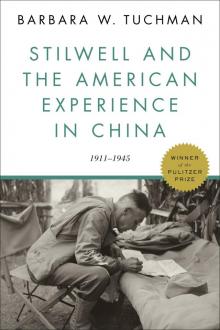 Stilwell and the American Experience in China, 1911-45
Stilwell and the American Experience in China, 1911-45 Bible and Sword: England and Palestine From the Bronze Age to Balfour
Bible and Sword: England and Palestine From the Bronze Age to Balfour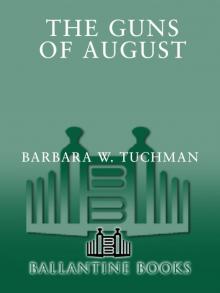 The Guns of August
The Guns of August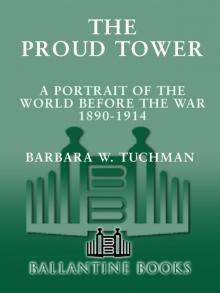 The Proud Tower: A Portrait of the World Before the War, 1890-1914
The Proud Tower: A Portrait of the World Before the War, 1890-1914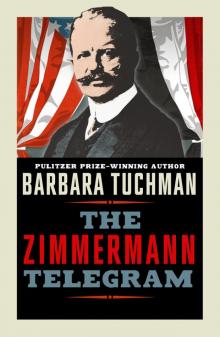 The Zimmermann Telegram
The Zimmermann Telegram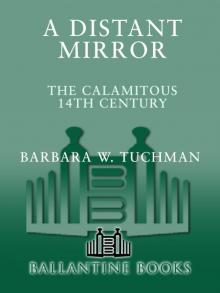 A Distant Mirror: The Calamitous 14th Century
A Distant Mirror: The Calamitous 14th Century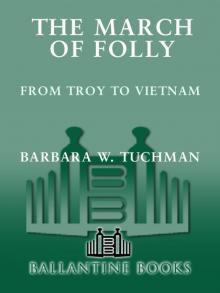 The March of Folly: From Troy to Vietnam
The March of Folly: From Troy to Vietnam The First Salute
The First Salute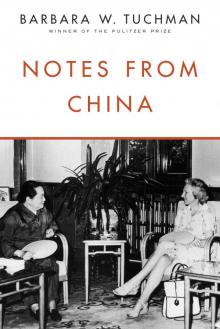 Notes From China
Notes From China Practicing History
Practicing History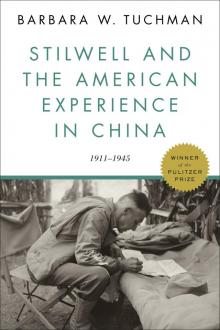 Stilwell and the American Experience in China
Stilwell and the American Experience in China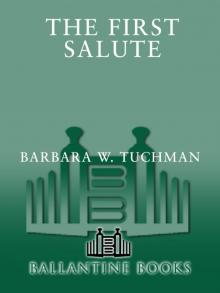 First Salute
First Salute Bible and Sword
Bible and Sword